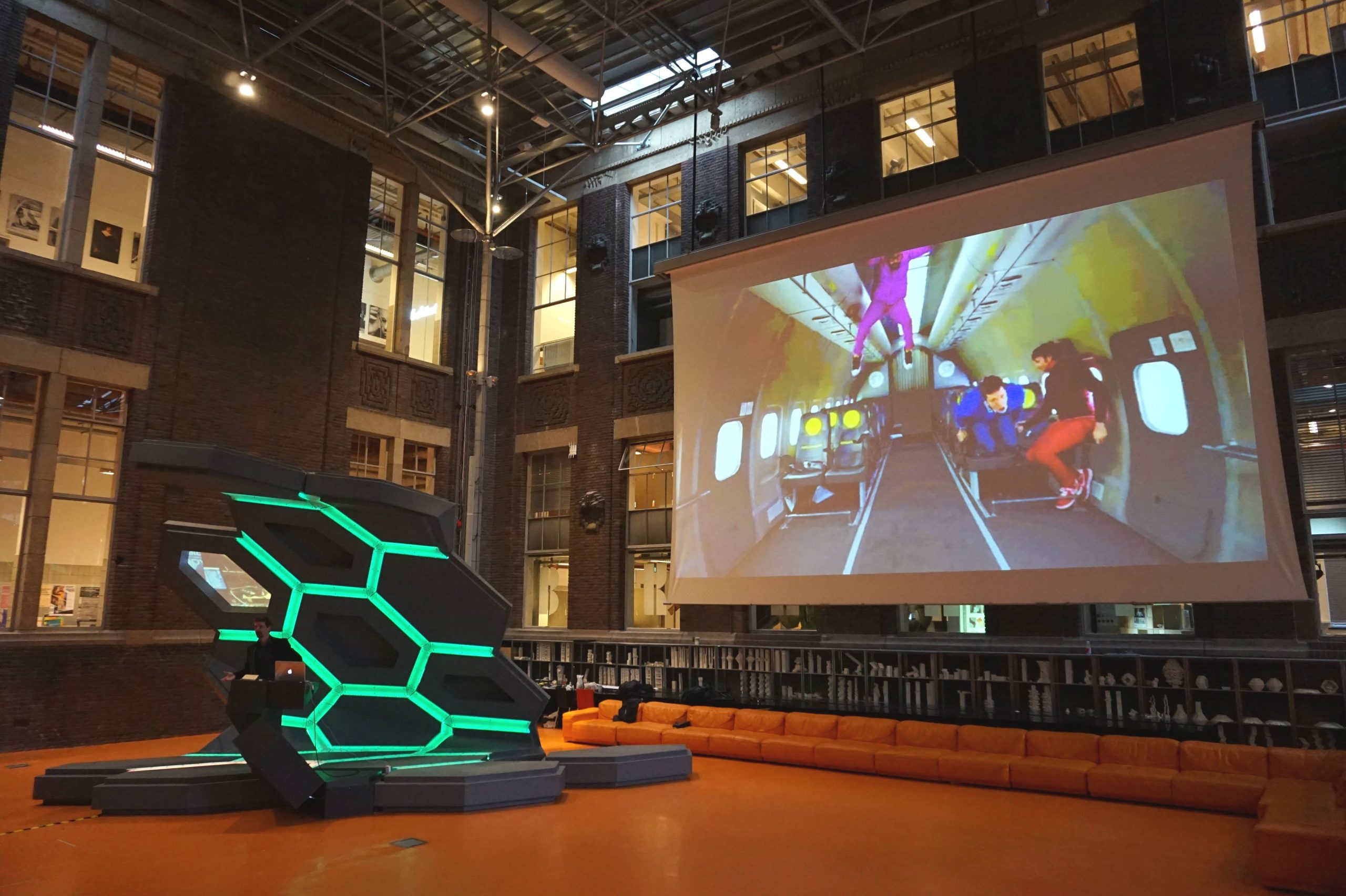Where will innovative architecture go from here? A group of experts in the field gathered at the third Game, Set and Match symposium to discuss the past, present and future of their industry.
The event took place between November 9-11, 2016 at the Faculty of Architecture and the Built Environment (BK) and was organised by Hyperbody, an ongoing research programme at TU Delft. Each one of GSM’s three days focussed on a particular topic while a series of futuristic features added extra dimensions to the proceedings.
Along with an app that allowed members of the audience to interact during the presentations via tweets and selecting images from a virtual gallery, the stage itself looked like something straight out of a science-fiction film. It was lined with neon lights, featured a pop-up podium and was even capable of ‘floating’ across the floor of the Orange Hall.
Day one addressed the topic of ‘Next Generation Building’ and opened with a presentation by Dr. Peter Russell, the dean of BK. While a large screen beside the stage screened a music video by OK Go, which features members of the band bouncing around in zero gravity while on board a Russian airplane, Russell discussed the impact of space exploration on design.
“None of our utopias are going to come about,” Dr. Russell said. “We’ve got to realise that the promise is never as good as the reality. We went to the moon and someday we’re going to go to Mars. It’s going to be very hard for those who go but we can’t allow that to discourage us from pushing boundaries, getting our hands dirty and making things happen.”
Additional presentations by Hyperbody Director Kas Oosterhuis, architect Frits van Dongen and others offered glimpses into the forward-thinking projects they’ve worked on over the years in addition to the impacts of cutting-edge technology on their careers. Van Dongen discussed what it was like to go from creating visionary blueprints on an old-fashioned drawing table to using some of the world’s earliest architectural software in the 1980s. He brought along a video that demonstrated its incredibly tedious rendering process.
“This was considered state of the art at the time,” he said. “You can see how slow it moves On and on and on. It was like a snail but we were completely fascinated by it and knew it was a sign of what was to come.”



Comments are closed.